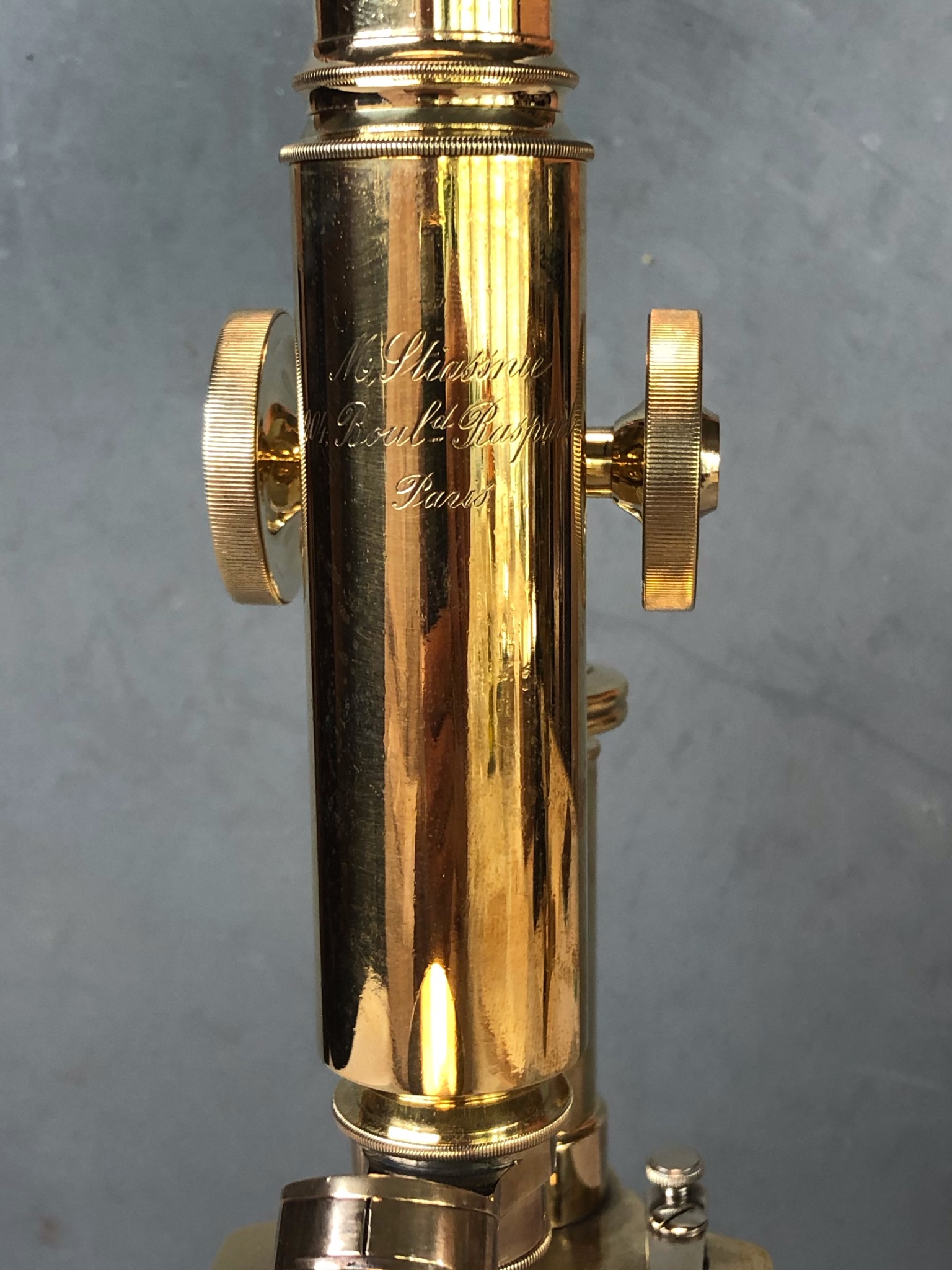The history of microscopy in France exemplifies the formation of professions in the history of civilization. First of the trades and then of the liberal professions. They are summarized as a compromise between the student or learner and the teacher. In most cases it becomes as close and special a relationship as it was in the case of C. de Verick throughout his production, in which he was featured as «Edmund de Hartnack’sEleve.» In this way, we will address the French manufacturers.
In France, the design and manufacture of microscopes and optical devices began with a successive series of immigrants from European countries who came to Paris, a city always open to foreigners. That is why it is easy to follow this saga of foreign manufacturers. George Oberhauser, born in 1798 in Germany, arrived in Paris and began his activity with Eric Gambey, with whom he patented some optical devices.
Then he begins the design of barrel or drum apparatus, a model that he will complete and refine until obtaining what will be called the “Continental model”. It is a piece with a heavy stand, filled with lead, which gives the microscope stability unlike the English models. In 1847 he apprenticed with his young nephew Edmund de Hartnack, also from Germany. Trecourt is already working in the workshop, with which he patents his large achromatic microscope.
Edmund succeeds his uncle in the company and later a Polish mathematician and physicist, Adam Prazmowsky, joins. This will become a partner of the company and will be responsible for it when having to return to Germany Edmund de Hartnack, because of the Franco-Prussian war. Among his disciples will be Constant de Verick who will continue the work and proudly proclaim throughout his active life to be «Eleve of Edmund of Hartnack». He will be succeeded by his politician’s son Maurice Stiassnie, from Austria, following the tradition of receiving apprentices from those countries. On his death, his sons continued with the company under the name «StiassnieFrères».
The history of French microscope manufacturers, apart from Artur and Charles Chevalier, begins with Alfred Nachet buying Edmund de Hartnack’s old workshop, when he has to go into exile. This designer and manufacturer will develop an extraordinary activity, considered one of the three best microscopists in France. When he retires, he is succeeded by his son, Albert Nachet, who will continue the family tradition with dignity.
Microscopes included: 14.
N 52). Oberhauser. 1835.
N 52c). Nachet. 1850.
N 52d). «.1860.
N 52e). Lerembours&Segretean. 1840.
N 52f) «». 1853.
N 52h). Double pillar. 1860.
N 52 a) Hartnack. 1870.
N 52b) Verick 1870.
N 52j) Chatelain. 1880.
N 52g) Bellieni. 1885.
N 52n) Swartz. 1880.
N 52l) Stiassnie. 1895.
N 52m) Bourigeaud 1895.
N 81). Cogit 1920.
















